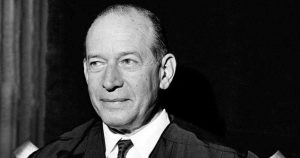“It’s up to Trump and his morally dormant Republican Party to ensure that Pittsburgh remains a spasm of the awful past — and not a harbinger of an even worse future.”
Richard Cohen, Washington Post
–————-
The most distressing aftermath of the last awful week has to be the lack of condemnation, even the absence of demands for basic decency, directed at the president of the United States on the part of the nation’s ruling political party.

Search high and low if you will and try to find any level of moral or human response, let alone condemnation, of the hate filled tone established and perpetuated by the president. The response to Trump’s increasingly unhinged rhetoric from GOP members of Congress is, well, unlike him silence.
The terrible events perpetrated by an anti-Semitic killer at a synagogue in Pittsburgh, a white supremacist gunman in Louisville and a wacko Trump supporting pipe bomber in Florida do bring appeals for lower decibel language from all sides. The first responders are properly praised since that is safe territory. The thoughts and prayers are extended. But the ranting racist president in the White House, he gets a pass from Republicans.
The president, as usual, has been all over the place in the wake of the largest anti-Semitic mass murder in U.S. history and a mass assassination attempt against Trump’s various opponents. He’s consulted his old, worn playbook – condemning reporters, vilifying opponents, accepting chants of “lock her up” at his rallies, spreading more hate and fueling more conspiracy. Fellow Republicans, well, they’ve been sitting on their lips hoping against hope that they can somehow slide past the mid-terms without great losses.
You simply cannot find a word of condemnation, concern or caution directed by a Republican toward the president. Columnist Richard Cohen calls the Vichy Republicans what they are – “moral cowards.”
Donald Trump should not – and ultimately will not – be held accountable for the senseless, racial and religious violence that has become an all-to-regular feature of American life. He has, however, undeniably made worse the deep and persistent hatred of “others” that has long and sadly been a part of the American story. He fans the flames of division. Hate and fear are the twin pillars of his strategy, such as it is, in the interest of ginning up the Republican base. You have to go back to the 1800s in American history to find such an openly racist, hateful president. And I don’t want to be unkind to Andrew Johnson or John Tyler.
Trump supporters and enablers will continue to deny the harsh reality of his racism, but the evidence is everywhere to see: the manufactured pre-election “crisis” at the border where a relative handful of desperate Central American refugees – not illegal immigrants – are fleeing a chaos of death and poverty that the United States, at least in part, helped create; the awful, hateful language about “Mexican rapists” and “low IQ” African-Americans; the Obama birther garbage; calling a black candidate for governor of Florida “a thief;” the proclamation that the president himself is a “nationalist” – code really for “white nationalist;” the equal apportionment of responsibility for the neo-Nazis atrocities in Charlottesville in 2017 and attacks on “globalists,” a term the white ultra-right uses to slander George Soros and Jews in general. And all that just constitutes Trump’s highlight reel of hate.

It is being said, and properly so, that Trump did not create this climate of fear and hatred, but he most certainly has exploited it for his own purposes. The Republican Party Trump now owns lock, stock and barrel (pardon the analogy) has allowed the party of Lincoln and Eisenhower and Reagan to resemble something disturbingly like the racist French political party led by the ultra-right Marine Le Pen. It is an awful realization that Trump has brought the GOP – and the nation – so very low in such a short time.
And where are the legislative Republicans?
“If there is such a thing as a hate crime,” said Senate Republican leader Mitch McConnell of Kentucky, “we saw it at Kroger [in Louisville] and we saw it in the synagogue again in Pittsburgh. Horrible, criminal acts.” But beyond saying everyone should tone down their rhetoric, McConnell has no words for Trump. No admonition to back off, to stop spreading fear and fostering more hate. McConnell remains, like most every elected Republican, afraid to take on Trump’s hatred for fear of the backlash from those motivated by Trump’s hatred.
He also likes the judges and the tax cut. It is a Catch-22 of political and moral abdication of a type rarely, if ever, seen in our lifetimes.

Where once Republicans were guilty of transmitting “dog whistles” aimed at “others,” their president today is, as Cohen wrote this week, offering a “validation” of his own hate fueled conspiracy theories. The Pittsburgh murderer of 11 people at their place of worship was prompted it seems not only by the killer’s anti-Semitism, but also by his hatred of the fact that Jews where actually living their beliefs and adding migrants fleeing their own versions of hell.
“Trump’s allies,” as Jonathan Chait has noted, “have gone from justifying his reality-show authoritarian persona as a necessary expedient to embracing it as a positive good.”
And more from Chait’s analysis in New York Magazine:
“It doesn’t matter if it’s 100 percent accurate,” a senior Trump-administration official told the Daily Beast, defending the president’s fear mongering attacks on a caravan of potential refugees. “This is the play,” Scott Reed, a strategist at the U.S. Chamber of Commerce, told the Washington Post. “It’s a standard tactic to use fear as a motivating choice at the end of a campaign, and the fact is the fork in the road is pretty stark.” In Texas, when a fan at a Ted Cruz speech exclaimed about [Cruz’s opponent] Beto O’Rourke, “Lock him up!,” Cruz answered, “Well, you know, there’s a double-occupancy cell with Hillary Clinton.”
———–
If you need a chilling reminder of what such moral bankruptcy can portend take an hour or so and read a remarkable little book by the French writer Eric Vuillard. The book – The Order of the Day – describes in chilling detail two events that seemed less than remarkable at the time, but we now know forecast a cataclysm outcome.

“Vuillard’s book is a powerful story that relates with a simplicity free of mannerisms,” Gaby Levin wrote earlier this year in Haaretz, “two historical events connected to the rise of Nazism in Germany in the 1930s and to Europe’s blind advance toward the abyss in the years before the war. Vuillard seeks to show how ‘sometimes the greatest catastrophes herald their arrival in small steps.’”
The first event was an unremarkable meeting early in 1933 in Berlin when 24 top German industrialists – we recognizes their companies to this day, Siemens, Bayer, Allianz, BASF, among others – pledged financial support to the then-struggling Nazi Party. Going along with the Nazis was an easy call for Germany’s industrial elite. Adolf Hitler was, of course, full of overheated rhetoric. The businessmen didn’t respect him, but they were sure he could be contained and after all he would probably be good for business.
The second event, five years later, recounts the Nazi takeover of Austria – the Anschluss – a series of cynical, opportunist, violent moves by Hitler that had they been resisted by politicians in Europe who should have known better could well have changed the course of history.
In recalling this history we should remember that many elected Republicans once saw through their current all-powerful leader. Senator Lindsey Graham, now Trump’s South Carolina toady, once warned, “If we nominate Trump we will get destroyed…and we will deserve it.” Today he tweeted his support for Trump’s immigration policy.

Ted Cruz, the loathsome creature seeking a second Senate term in Texas, called Trump a “coward” after Candidate Trump insulted Cruz’s wife and tied his father to John Kennedy’s murder. The two will soon campaign together again in Texas.
———–
We are long past the point where we can expect, much as we might hope for it, Republicans, even in the mildest terms, to repudiate Donald Trump, his racism and his politics of hate. Moral bankruptcy begets moral bankruptcy.
Now, its up to the run of the mill American citizen to decide what kind of leadership they want and what kind of country they hope to inhabit. This is what elections are for. We shall see what happens as Trump likes to say and, while you contemplate your vote next week consider this:
Acclaimed historian Jill Lepore has written a remarkable new history of the United States, perhaps the most ambitious re-telling of the American story in generations. She sees the broad sweep of history in all that is happening around us. “I think we live in an age of tremendous political intolerance,” she said recently in an interview. “I think we live in an age where people don’t understand the nature of our political institutions.

“That really, really concerns me. Because it’s a symptom of the way people want to win by any means necessary. Because we’ve been given this kind of rhetoric of life or death, we’re on the edge of a cliff. It’s very hard for people to operate as a civic community interested in the public good in that kind of a climate.
“We all have contributed to the making of this climate, but I hope this is climate that can still change.”
I hope for change, too, but also acknowledge that we are indeed on the edge of a cliff.
——0——










